Hazy History, Decolonized: María Sabina, the Mazatec Shaman of Psilocybin
By Z House
Mycelium, Media, Meaning
In May 1957, the Western world first learned about psychedelic mushrooms, and was forever changed by their ancient, sacred wisdom.
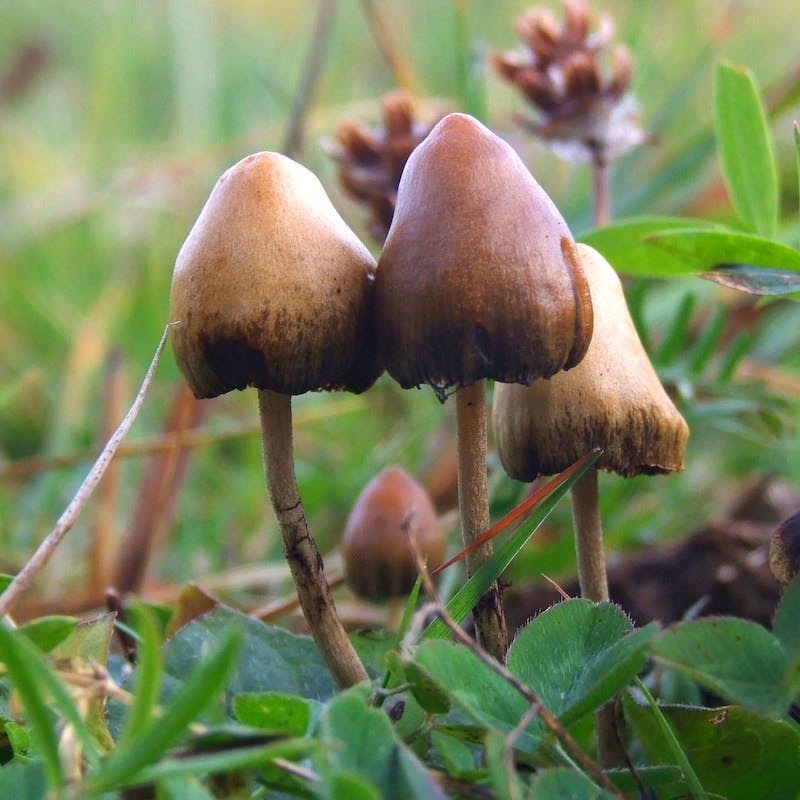
While this may sound hyperbolic in an age of exaggeration and clickbait, back then, information was scarce: no blogs or mobile phones, only a few magazines, newspapers and three television channels.
Since there was less information overall, a single story could have a much greater impact. Of particular significance is the story of María Sabina.
As anyone who has taken psilocybin knows, mushrooms can be transformational. Now, imagine the effect that could have on an entire society, especially one trapped in the notorious conformity of the 1950s USA.
Mushroom Poet, Medicine Woman
María Sabina was a Mazatec poet, healer and shaman from the town of Huautla de Jiménez, Mexico.
The Mazatec are an indigenous religious community that blends Christianity with traditional religious practices. María Sabina, for instance, considered herself a Catholic.
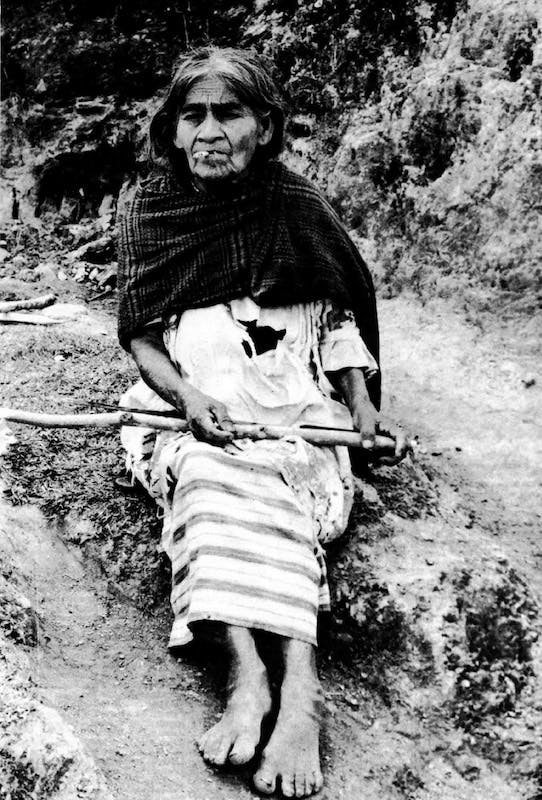
Portrait of María Sabina
Her psychedelic ceremonies were a type of healing practice that were done in service to her community and to the mushrooms themselves.
She was a true–if perhaps unknowing–visionary, delivering wisdom to the masses and shaking the foundations of belief, spirituality, healing and the as-of-yet-unexplored frontiers of human consciousness.
While her spiritual lineage stretched back generations to her small Mexican village and the surrounding communities, little was known of the sacred potency of the unassuming mushroom known as teonanacátl.
Put simply, María Sabina brought psilocybin to the attention of the world.
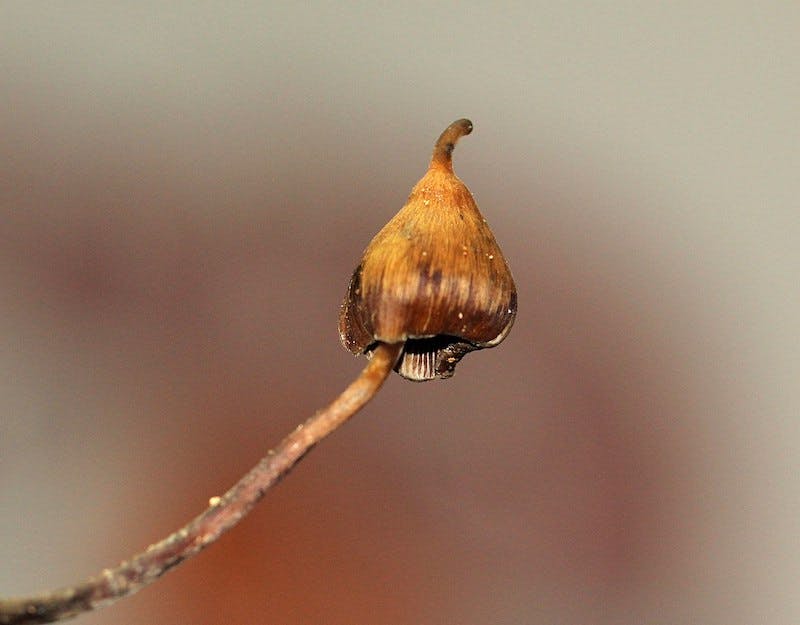
“Fruit body of the psychoactive mushroom Psilocybe hoogshagenii var. hoogshagenii R. Heim. From Huautla de Jiménez, Oaxaca, Mexico. "Notes: Purchased from mazatec indians.”
Colonizing Psilocybin
Entheogenic mushrooms (or mushrooms with psychedelic properties) had long been used among Indigenous populations in both North and South America, but the practice was little known to the world at large.
In May 1957, darkness lifted and ignorance disappeared into the glow of psychedelic wisdom.
A banker by trade, R. Gordon Wasson had been studying mushrooms for decades and had read about strange, magical ceremonies. Disapproving anthropologists spoke of people consuming certain kinds of mushrooms and becoming possessed with spirits and healing powers.
Eventually, Wasson was sent by Life Magazine and possibly the CIA, to attend one of these ceremonies and report back. The assignment may have been a culmination of a personal quest of some sort. By fate or luck, his personal discovery, his quest for understanding the divine, would turn into a collective spiritual enlightening.
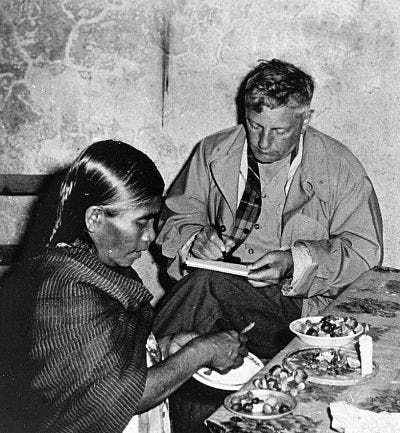
R. Gordon Wasson taking notes from María Sabina / R. Gordon Wasson Estate
Valid Velada vs. Stolen Velada
After telling Sabina a fib that he was worried about his son, Wasson convinced Sabina to let him join the ritual, and he became the first Westerner to participate in a healing mushroom ceremony, called a Velada.
The traditional healing arts associated with these sacred fungi were used as a form of medicine that involved language and entheogens (i.e. “psychoactive substances that induce alterations in perception, mood, consciousness, cognition, or behavior for the purposes of engendering spiritual development”) as a source for healing.
An ailing person would come to Sabina and together they would eat the sacred mushrooms and María would chant spontaneous poetry that was dictated to her by the “Niños Santos” or “little saints”.
The seeker would often “vomit up the sickness” and if they couldn’t vomit, María would purge on their behalf. She cured diseases, answered questions, found lost objects, working as a general shamanic practitioner, before magic was dismissed as superstition by the same scientific minds that she invited to scrutinize her sacred mushroom wisdom.
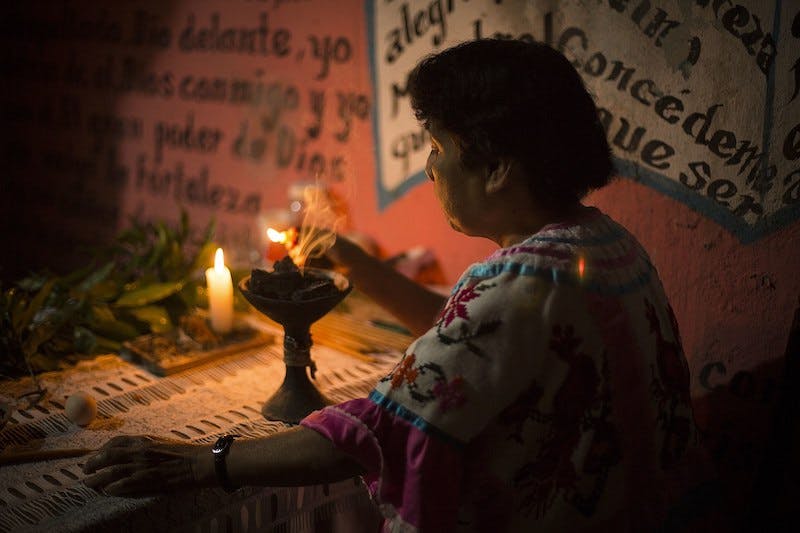
Curandera preparing a cleansing ceremony in Huautla de Jiménez, Oaxaca
Reading Books That Don’t Exist
The “Little Saints” told her the right words and offered her ethereal books that she would read to discover the answers sought.
Interestingly, she never learned to read in real life, but she recited her poetry from visionary books that did not exist. She spoke often of books in her poetry.
Like other psychonauts, there were recurring entities she claims she encountered. She said they told her that she would help “people from the outside world”. She said they warned her that sharing the secrets would dilute their power.
To some extent, they were right, as there was considerable backlash, both with local authorities and fellow shamanic practitioners. Nonetheless, she did not blame Wasson.
One can only hope that while she may have lost her place in a particular spiritual hierarchy, more people have been helped by a greater access to sacred wisdom.
Finding God in a Small Mexican Village
Along with her notoriety, María Sabina became a counter cultural celebrity and over the next 20+ years her tiny town became overrun with hippies, mystics, visionaries and worst of all, rock stars.
Allegedly, she hosted sessions with mega celebrities including Bob Dylan, John Lennon and Pete Townsend.
As we approach the possible legalization of psilocybin for recreational, therapeutic and spiritual purposes, it's possible that history will look back on María Sabina as a sort of whistleblower.
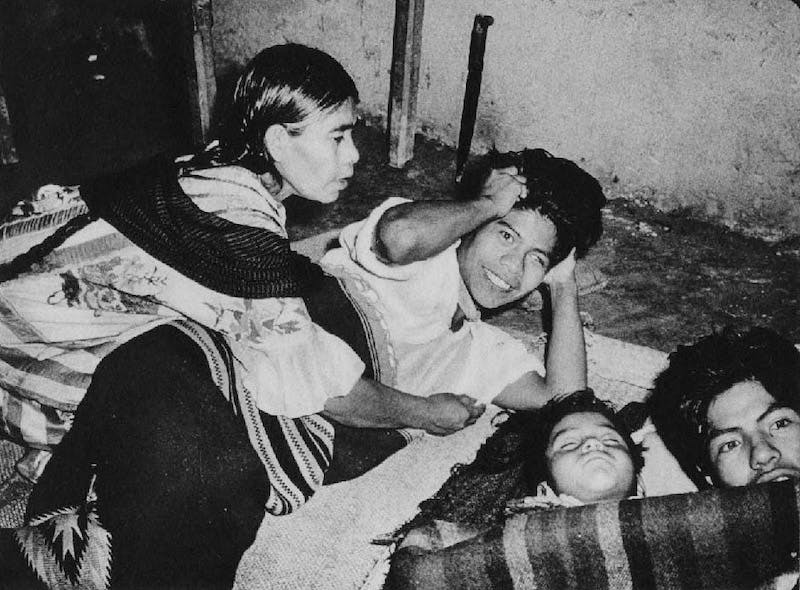
María Sabina guiding a powerful experience
She shared the secrets that were kept by the mushrooms, setting the world on a path towards whatever salvation can be found by listening to our rhizomatic–dare we say–fellow travelers.
Those who have spoken with the mushrooms themselves understand the profundity of that message.
While the Mazatec shamans were communing directly with the mushrooms, Wasson read his experiences through a monotheistic lens. Despite the traditional ceremonial uses of the mushroom, Wasson was looking for God.
Instead, he found María Sabina.
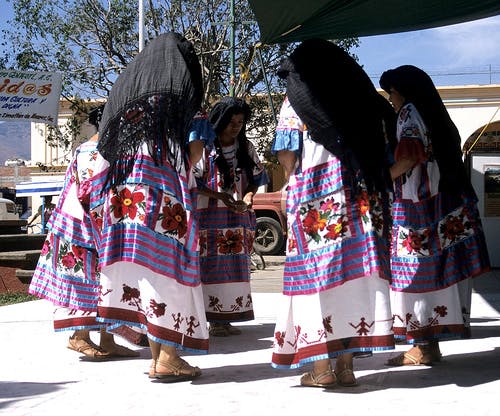
Mazatec women dancing in Huautla de Jimenez
Relics and Resources
To continue down the magical path, check out the 1979 Spanish documentary on María Sabina, entitled “María Sabina: Mujer Espíritu” (“María Sabina: Spirit Woman”) available on Youtube.
Selected English transcriptions of the documentary can be found here.
Lastly, here is a 1957 vinyl recording of Maria Sabina leading a Velada: a shamanic healing vigil utilizing magic mushrooms.
Z House is a writer, artist and researcher living near the beach, outside Los Angeles. In another life they were featured on CBS, NPR and other news outlets for poetry and artwork. They are a lifelong enthusiast of, and advocate for safe, legal access to altered states of consciousness.